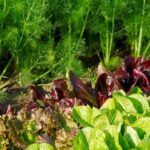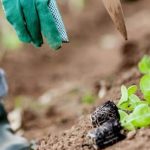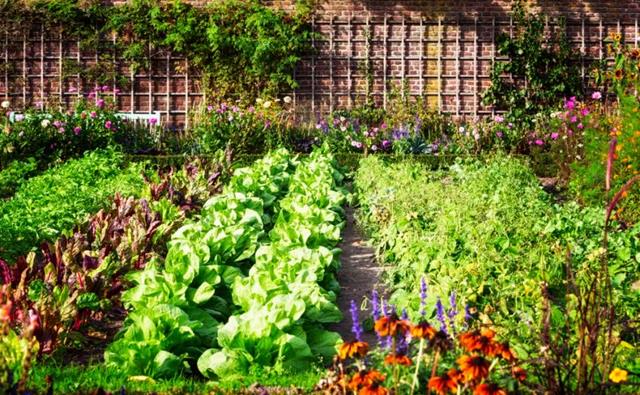Vegetable gardening can be a rewarding and fulfilling activity for beginners, and with the right guidance, it can be easier than you think. In this article, we will explore the benefits of starting a vegetable garden for beginners and provide helpful tips for getting started. Whether you have a spacious backyard or just a small balcony, easy vegetable gardens for beginners are achievable with the right knowledge and tools.
Starting a vegetable garden not only allows you to enjoy fresh produce right at your doorstep but also provides numerous health benefits. From getting exercise outdoors to reducing stress and providing nutritious food for your family, the advantages of growing your own vegetables are countless. In this section, we’ll discuss why beginning a vegetable garden is worth the effort and how it can enhance your overall well-being.
Moreover, by delving into essential topics such as choosing the right location, selecting the best vegetables to grow, preparing the soil, and maintaining your garden, we aim to equip beginners with the necessary knowledge and skills to cultivate their own successful vegetable gardens. With our comprehensive guide, even those new to gardening can embark on this fulfilling journey towards sustainable living and self-sufficiency.
Choosing the Right Location
When it comes to starting a vegetable garden, one of the most essential steps for beginners is choosing the right location. The ideal spot for your easy vegetable garden should receive at least 6-8 hours of sunlight per day, have access to water, and good drainage. Here are some considerations when finding the perfect location for your beginner’s vegetable garden:
- Sunlight: Look for an area in your yard that receives ample sunlight throughout the day. Most vegetables need plenty of sunlight to grow and thrive.
- Water access: Ensure that your chosen location has easy access to water. Whether it’s through a nearby hose or irrigation system, having water readily available will make caring for your vegetable garden much easier.
- Good drainage: It’s important to choose a spot with well-draining soil to prevent waterlogging, which can lead to root rot and other issues in your plants.
In addition to these considerations, it’s also beneficial to choose a location that is easily accessible from your home. This will make it more convenient for you to tend to your garden and monitor its progress regularly.
When selecting the right location for your easy vegetable garden, keep in mind that different vegetables have different needs. Some may require more sunlight or space than others. Be sure to consider these specific requirements when planning out the layout of your garden.
Lastly, if you don’t have a yard or suitable outdoor space for a traditional ground garden, consider alternative options such as container gardening or raised beds. These can be placed on balconies, patios, or any other small outdoor areas where you can still grow an abundance of fresh produce.
By carefully choosing the right location for your easy vegetable garden, you’ll set yourself up for success as a beginner gardener and increase the likelihood of a bountiful harvest.
Essential Tools and Supplies
When starting your own easy vegetable garden for beginners, it’s important to have the right tools and supplies on hand to ensure the success of your garden. Here are some essential items that every beginner vegetable gardener should have:
1. Garden Gloves: Protect your hands while working in the soil and handling plants with a durable pair of gardening gloves.
2. Hand Trowel: A handheld garden tool with a narrow, pointed blade is essential for planting, transplanting, and digging small holes in the soil.
3. Watering Can or Hose: Keep your vegetable garden properly hydrated with a watering can or hose equipped with a gentle spray attachment.
4. Garden Fork: A sturdy garden fork is great for turning and aerating the soil before planting, as well as for removing weeds and mixing in compost or fertilizer.
5. Pruning Shears: Keep your plants healthy and thriving by trimming away dead or overgrown branches with a reliable pair of pruning shears.
6. Seed Starter Trays: Get your seeds off to a healthy start by using seed starter trays filled with nutrient-rich soil. This will help you grow strong seedlings ready for transplanting into your garden.
In addition to these tools, it’s important to have high-quality potting mix, fertilizers, and organic pest control solutions on hand to keep your easy vegetable garden flourishing. With the right tools, you’ll be well-equipped to start and maintain a successful vegetable garden for years to come.
Selecting the Best Vegetables
When it comes to starting an easy vegetable garden for beginners, selecting the right vegetables to grow is crucial. Fortunately, there are plenty of options that are perfect for those new to gardening. One of the easiest vegetables to grow for beginners is lettuce.
Lettuce is a low-maintenance plant that can be grown in both containers and garden beds, making it a versatile choice for novice gardeners. Additionally, radishes are another great option for beginners due to their fast growth and minimal maintenance requirements.
Another easy-to-grow vegetable for beginners is cherry tomatoes. These plants thrive in containers or small garden spaces, making them ideal for those with limited outdoor space. Peas are also a fantastic choice for beginner vegetable gardeners, as they require minimal care and can even tolerate cooler temperatures. Lastly, zucchini is another easy option for beginners, as these plants produce a high yield with very little effort.
In addition to these vegetables, herbs such as basil, cilantro, and parsley are also great choices for beginner vegetable gardens. Herbs are not only easy to grow but also add flavor and aroma to your dishes. With these easy-to-grow options, beginners can start their vegetable gardens with confidence and enjoy the satisfaction of growing their own produce.
Preparing the Soil
When starting a vegetable garden, one of the most important factors to consider is the soil. The quality of your soil will directly impact the health and yield of your plants, so it’s crucial to ensure that you are creating the perfect environment for your vegetable garden. For beginners, this may seem like a daunting task, but with the right tips and techniques, preparing the soil can be a manageable and rewarding process.
One of the first steps in preparing the soil for your easy vegetable garden is to test its pH level. Most vegetables prefer a slightly acidic soil with a pH level between 6.0 and 7.0.
You can easily test your soil using a pH testing kit available at most gardening centers or through your local agricultural extension office. Once you know the pH level of your soil, you can make any necessary adjustments by adding lime to raise the pH or sulfur to lower it.
In addition to testing and adjusting the pH level, it’s important to ensure that your soil has good drainage and is rich in organic matter. Adding compost or well-rotted manure to your soil can help improve its texture and fertility, providing essential nutrients for your growing vegetables. For beginners, starting with high-quality potting mix or raised beds can also be an effective way to create an ideal environment for their vegetable garden.
| Soil Preparation Tips | Benefits |
|---|---|
| Test pH level | Determines if adjustments are needed for optimal plant growth |
| Add compost or manure | Improves soil texture and provides essential nutrients |
| Ensure good drainage | Prevents waterlogging which can harm plant roots |
Planting and Maintenance
Starting From Seedlings
For beginners, starting a vegetable garden with seedlings is often recommended. It’s an easy and convenient way to ensure your plants have a good head start. You can find seedlings at gardening centers or nurseries, and they are typically labeled with important information such as the type of vegetable, ideal growing conditions, and planting instructions.
Starting From Seeds
If you prefer to start from seeds, make sure to follow the instructions on the seed packets regarding when and how to plant them. Some vegetables can be planted directly into the soil, while others may need to be started indoors before being transplanted outside. Remember to keep track of when you planted your seeds so you can anticipate when they will sprout.
Establishing a Regular Maintenance Routine
Once your vegetables are in the ground or containers, it’s crucial to establish a regular maintenance routine. This includes watering your plants regularly, especially during dry periods. Fertilizing is also essential for providing your vegetable plants with the nutrients they need to thrive. Keep an eye out for any signs of pests or disease, and take action promptly if you notice any issues.
Monitoring Growth and Making Adjustments
As your vegetables start to grow, it’s important to monitor their progress and make any necessary adjustments. This may include providing support for vining plants like tomatoes or cucumbers, thinning out overcrowded areas, and ensuring that each plant has enough space to flourish.
Remember that gardening is a learning process, so don’t be afraid to make changes as needed based on how your plants are growing. With some time and effort invested in regular care routines and staying attentive to garden needs like pruning.
By following these steps for planting and maintenance of your garden properly one can easily grow their own fresh produce at home without much hassle that even beginners will find enjoyable and rewarding.
Pest and Weed Control
One of the common concerns for beginner vegetable gardeners is pest and weed control. However, with the right methods and techniques, it can be easily managed to keep your garden healthy and thriving. There are various easy and natural ways to protect your plants from pests and prevent pesky weeds from taking over.
One effective method for controlling pests in your easy vegetable garden is companion planting. This involves planting certain vegetables, flowers, or herbs together to naturally repel insects or attract beneficial insects that will prey on pests. For example, planting marigolds alongside tomatoes can help deter nematodes, while attracting pollinators that are essential for fruit development.
Another important aspect of pest control is regular inspection of your plants. By checking for signs of infestation early on, you can take proactive measures such as handpicking insects off the plants, removing affected leaves, or applying organic insecticidal soaps to keep pest populations in check.
When it comes to weed control in your vegetable garden, mulching is a simple yet effective method that beginners can use. Applying a layer of organic mulch such as straw or wood chips around the base of your plants can suppress weed growth by blocking out sunlight and preventing weed seeds from germinating.
In addition to these methods, practicing good garden hygiene by keeping your tools clean, regularly removing plant debris, and rotating crops can also help reduce the risk of pest and disease problems in your easy vegetable garden for beginners.
| Pest Control Methods | Weed Control Methods |
|---|---|
| Companion planting | Mulching |
| Regular plant inspection | Garden hygiene |
Harvesting and Enjoying the Fruits of Your Labor
Now that you have put in the hard work and dedication to your easy vegetable garden for beginners, it’s time to reap the rewards of your labor. Harvesting your homegrown produce is a gratifying experience that allows you to enjoy fresh, flavorful vegetables while also minimizing trips to the grocery store. Additionally, maximizing your yield and knowing how to use your bountiful harvest can be equally rewarding. Here are some tips for making the most of your homegrown produce.
Harvesting Tips
When it comes to harvesting your vegetables, timing is key. Be sure to harvest your vegetables at the peak of their ripeness for the best flavor and nutritional value. For leafy greens like lettuce and spinach, start harvesting when the leaves are young and tender. Root vegetables such as carrots and radishes should be harvested when they have reached their mature size but before they become overgrown and tough.
Using Your Homegrown Produce
Once you have harvested your vegetables, it’s time to put them to good use. Create delicious salads with your freshly picked lettuce, cucumbers, and tomatoes. Use herbs like basil and parsley to add a burst of flavor to your favorite dishes. You can also get creative with recipes that feature your homegrown produce as the star ingredient. From homemade salsa with ripe tomatoes and peppers to pickled cucumbers, there are countless ways to enjoy the fruits of your labor.
Preserving Your Harvest
If you find yourself with an abundance of homegrown produce, consider preserving it for later use. Freezing, canning, or pickling vegetables are great ways to extend their shelf life while still maintaining their nutritional value and flavor. By preserving your harvest, you can continue enjoying the fruits of your labor long after the growing season has ended.
Conclusion
Starting your own easy vegetable garden as a beginner can be a rewarding and enjoyable experience. Not only will you be able to enjoy the benefits of fresh, homegrown produce, but you will also gain a deeper appreciation for the effort that goes into growing your own food. By following the tips and guidelines provided in this article, you can confidently start your journey into easy vegetable gardening.
Remember, choosing the right location, essential tools and supplies, selecting the best vegetables, preparing the soil, and proper pest and weed control are all essential aspects of creating a successful vegetable garden. With dedication and effort, you can create a thriving garden that provides an abundance of delicious vegetables for you and your loved ones to enjoy.
In conclusion, don’t be discouraged if you encounter challenges along the way. Starting an easy vegetable garden as a beginner may have its ups and downs, but with perseverance and patience, you can achieve great success. So go ahead and start your own easy vegetable garden today – it’s a fulfilling experience that will bring joy and satisfaction as you watch your garden flourish and provide you with an abundance of fresh, healthy produce.
Frequently Asked Questions
What Is the Easiest Vegetable Garden for Beginners?
The easiest vegetable garden for beginners is a small raised bed or container garden. These are easier to maintain and control, making them perfect for those new to gardening.
What Vegetables Are Easiest to Grow for Beginners?
For beginners, vegetables like lettuce, tomatoes, cucumbers, and peppers are the easiest to grow. These plants are relatively low-maintenance and don’t require a lot of space or specialized care.
What Are the Best Vegetables for a First Time Garden?
The best vegetables for a first-time garden include radishes, carrots, and green beans. These vegetables are generally easy to grow, relatively low-maintenance, and can be quite rewarding for new gardeners to cultivate.

If you’re looking to get into vegetable gardening, or are just looking for some tips on how to make your current garden better, then you’ve come to the right place! My name is Ethel and I have been gardening for years. In this blog, I’m going to share with you some of my best tips on how to create a successful vegetable garden.





